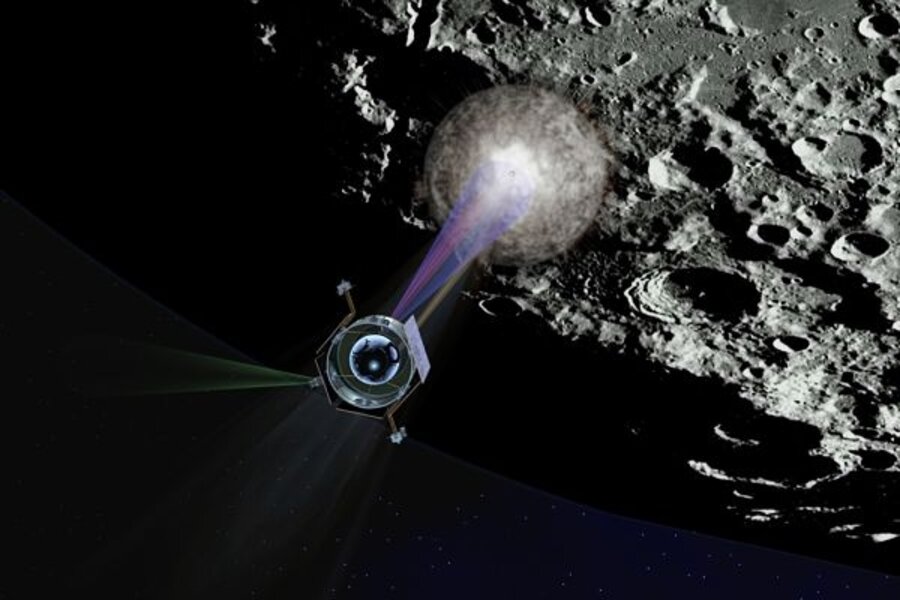NASA moon bombing successful. Did we find water?
Loading...
NASA did it. NASA bombed the moon.
Its LCROSS mission punched two new craters in the moon this morning, and only about a minute behind schedule (see video below).
As for whether LCROSS kicked up evidence for water on the moon (the object of the exercise), the jury is still out.
It will take scientists a couple of weeks to figure out if the shadowed area of Cabeus crater holds any water ice. Visually, not much seemed to happen. Michael Bicay, the science director a NASA's Ames Research Center said: "It's hard to tell what we saw here."
But if the science team does find water? How do you get at it, especially if it's covered with moon dust? Just nuke it in a microwave!
That's an approach Ed Ethridge and his colleagues are experimenting with at NASA's Marshall Space Flight Center in Hunstville, Ala. It's a way of turning radio waves into a wringer.
Using simulated moon dirt, they found that under very cold, moon-like temperatures and in a vacuum, a standard household microwave oven would heat the lunar soil, causing ice that had condensed on the soil's grains to change directly from solid directly to gas. By trapping and cooling the gas, they got liquid water.
The approach clearly isn't ready for prime time, Dr. Ethridge cautioned during a phone chat. But it is a proof of principle, he says.
If it works on real lunar soil, it could eliminate the need to dig up icy soil with heavy machinery and run it through energy-hunger water-removal equipment.
Typically, when you cook with a microwave, he says, the microwaves are heating up the water molecules in the food -- cooking from the inside out. But heating ice itself is a different issue. Take that frozen chicken you defrosted as an example. It took several minutes. That's because the oven is operating at less than full power. But it also takes time because ice doesn't respond to microwaves as readily as liquid water does, Ethridge explains.
In the case of lunar soil, the microwaves heated it just enough, even at liquid-nitrogen temperatures, to warm the ice, which then vaporized.
Dr. Etheridge's team extracted 99 percent of the simulated soil's water content.
With data from the experiment well in hand, Ethridge says his group wants to measure the properties of true lunar soil archived at the Johnson Space Center. Then the team can plug that information into their computer models to gage how lunar soil would respond to microwaves.
Lunar-outpost designs call for recycling virtually everything possible, Ethridge notes. But those designs still envision loses -- to the tune of about a ton of water and a ton of oxygen a year.
If microwaving lunar soil proves practical, it could provide a relatively simple way to replenish those losses. And, he adds, "we wouldn't have to strip-mine the moon to do it."





